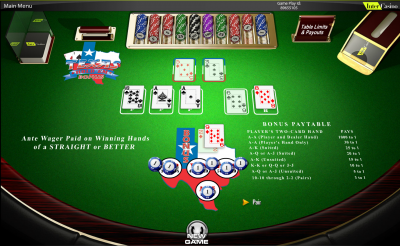Odds Of Quad Aces In Texas Holdem
As a poker beginner, you might be already envisioning the money made when you look down at your cards and see pocket aces. While it is true that AA will win more often than not, you still need to understand you will not win every time. So how often can you expect to win with aces?
Pocket aces win 85% of the time against one opponent holding the random hand in Texas Holdem. Although the percentage varies greatly depending on the opponent’s hand and the number of opponents. 85% is the odds to win when AA goes all-in preflop. Odds change on later streets.
Probability of being dealt an ace in any Texas Hold'em game is 15%. How to use aces odds. These tables are not going to be of much use to you whilst you play, but it is useful information on the probabilities of hands with aces turning up at your table. The most useful information from these aces odds tables is that the likelihood of a player. The odds of receiving any of the thirteen possible pocket pairs (twos up to Aces) is: (13/221) = (1/17) ≈ 5.9%. In contrast, you can expect to receive any pocket pair once every 35 minutes on average. Texas Holdem Heads-Up Preflop Odds. This table was created by enumerating through every possible board and opponent hole card combination for each of the 169 texas holdem preflop starting hands. In No Limit Hold'em, a player has about a 2% chance of having quads by the river while they hold a pocket pair. In No Limit Hold'em, a player has about a 0.001% chance of flopping quads without a pocket pair. Quads are beaten by just three types of hands: 1.In most bad beat jackpots at casinos around the country, the qualifying losing hand must usually be Quad 8s or better.
It might feel unfair when we loose holding the best hand but keep in mind if we are not 100% to win, we will lose sometimes.
Table of ContentsChances of winning with pocket aces preflop
Firstly let’s look at odds of winning with AA preflop. For better representation, I will take a sample of 100 examples. So next 100 times you receive an AA, 15 times you will lose and win 85 times.
We should not forget about variance. If we experience negative variance (if we are unlucky), then we may lose 30 times and win 70 times only. On the other hand, if we get a positive side of variance (if we are lucky), we could win 95 out of 100 times!
Odds for winning when all-in preflop change depending on which hand we are up against. See how well does AA against specific hands. For new players to poker, let me elaborate on the table below.


Odds Of Quad Aces In Texas Holdem Poker
- 72o means any combination of 7 and 2, o after means the hand is off-suit (meaning that suits on 7 and 2 don’t match)
- 22+ means any pocket pair of 2 and higher (which is all pocket pairs from 22 to and including AA)
- T+ means any card T and higher (T, J, Q, K, A)
- JTs stands for JT suites, which means that suits of J and T match
- broadway hands are the hands that include any combination of hands where the lowest card is T or higher (TQ, TJ, AA, KK, TT, AT)
How odds change against more players
The odds of winning reduce if more players are involved in the hand. Against two opponents holding random hands, AA wins 73.5% of the time. Against three, the odds of winning are now merely 64%.
The tool I am using to show you the % is called Equilab. And you can download it for free from Pokerstrategy’s website. Click on Poker Tools in the menu, the software and scroll down to the end where it says Free training software. Make sure you download the one for Hold’em (it’s written only Equilab).Chances of winning with AA on later streets
In poker, there is more than just preflop. We know four streets. Those are preflop, flop, turn, and river. It’s easy to calculate your odds to win preflop. When it comes to postflop, things start to get more complex. There are many possible flops. In fact 22100 possible flops. Now some of those could be grouped, but that would still leave us with 1755 different scenarios of flops. On turn and river, that number only increases.
So I can’t show you the odds of winning with AA against those. But I encourage you to download yourself Equilab I linked to above and play around with different flops, turns, and rivers. As a general rule of thumb, more players, the more cautious you need to be. It will be more likely at least one player has something good.
Chances of winning pre-flop with other hands
Pocket aces are the strongest hand in poker. But we shouldn’t ignore others. The second strongest hand in Hold’em are pocket kings followed by pocket queens.
Chances to win with pocket kings
From the table, we can notice that equity (% to win) with KK against random hand preflop is a bit different for some cards and pretty much the same for others. The biggest difference comes from broadway hands and 22+. The difference is because 22+ and broadways also include AA and that crushes us (AA is 82% to win against KK).
KK has 78.5% chance to win preflop against a random hand. So if our opponent holds a random hand they will still win roughly 1 out of five times. 21.5% of the time to be exact.
Important note. In scenarios above for AA and KK, where I compared them to random holding, I assumed the opponent has a random hand he is willing to go all-in with preflop. In real poker games, opponents will not be going all-in with random hands.
Lets now check the case for QQ
Same as for KK our equity with QQ now falls lower, when we are up against broadway hands and pocket pairs.
Lastly let’s check how we do against those hands with AK as many players like to overplay AK.
Many beginner players are shocked when they see how poorly AK does. That’swhere seasoned poker players will make a lot of money from beginners. Any experienced player knows newbie often overplays hands that look nice but don’t do that good against stronger holdings. With QQ our equity was a lot higher for all of the scenarios. Even against the worst combination of 72o, AK is supposed to win only 2 out of 3 times. This means you will lose 32 times and win 62 times. And that is if you run just average. And this if there would be no variance involved.
I will go deeper into the strategy in another article as it is a massive topic on its own. For now, know when the opponent goes all-in preflop, he will have a decent hand unless they are aggressive players willing to bluff their stack. While some players play tighter (they don’t play many hands) than others a good rule of thumb is pocket kings and aces are always strong enough to get all the money in the middle preflop. With QQ we should be good against the majority, but the tightest people. When it comes to AK, it depends on the opponent we are up against. Often it comes down to personal playing style. I prefer to play my AK a bit more passively, and I will not be blindly throwing my stack in the middle to gamble for what is around 50% to win against what opponent wants to go with all-in.
Conclusion
While pocket aces are a definite favorite against any other hand preflop, it doesn’t mean it’s guaranteed to win. Odds change significantly if more players are involved, but at the end of the day, if we get all the money in preflop, we should be happy. In the worst-case scenario, we will have 77.5% to win. When we have either KK or QQ we should still do good. But with AK we need to start being cautiouspreflop.
Related Links
- Ace King vs Pocket Jacks: Winrate and Examples
- Odds of Winning With Pocket Kings: Including the Winrate
- Chances to Win with QQ: Graph Included
Odds Of Quad Aces In Texas Holdem Game
Playing poker is about playing the odds. The following list gives the odds for outcomes in Texas Hold’em hands. When you realize how heavily the odds are stacked against you, you may want to rethink going all-in before the flop with two suited cards. Use the odds to your advantage:
1 percent (1-in-100): Percentage of time that no player holds an Ace or a King at a table in a 10-handed game
1 percent (1-in-100): Percentage of time that if you hold two suited cards, you’ll flop a flush
6 percent (about 1-in-20): Percentage of time that five community cards will give pocket suited cards a flush
6 percent (about 1-in-20): Percentage of time that you’ll be dealt a pocket pair
8 percent (about 1-in-12): Percentage of time that you’ll hit at least trips after having a pair on the flop
12 percent (about 1-in-8): Percentage of time that you’ll flop trips if holding a pocket pair
12 percent (about 1-in-8): Percentage of time that two more cards will flop in the same suit as a suited pocket pair
19 percent (about 1-in-5): Percentage of time that the five community cards will at least trip your pocket pair
32 percent (about 1-in-3): Percentage of time that you’ll pair one of your cards on the flop (with no pocket pair)
33 percent (about 1-in-3): Percentage of time that you’ll make a full house or better after having trips on the flop
35 percent (about 1-in-3): Percentage of time that you’ll make a flush on the turn or river if you have four cards to a flush after the flop